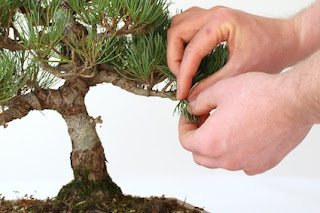Why My Juniper Bonsai Will not Recover from Pruning
Although pruning a juniper (Juniperus spp.) to keep it a bonsai isn’t hard, the procedure is reasonably exacting. If you prune too severely or prune during the wrong time of 12 months, your juniper will have difficulty recovering, if it is even able to recover. When pruning your bonsai, start off slowly, and enhance your cuts a little bit at a time so that you really don't make a error.
Junipers have buds only at the ends of their branches. So though you can stimulate growth in your juniper bonsai by pinching its tips and cutting small portions from its green components, cutting into its brown parts will not consequence in new growth. The tree has no dormant buds that it can send out the way many broadleaf evergreens can. If you cut into a brown, woody component of your juniper, that cut will be permanent, and the bonsai will not recover. It also will not recover well from a tough pruning in summer or early winter.
Due to the fact junipers grow largely in late winter and early spring, with yet another flush of growth in fall, individuals are the best times to prune your bonsai. Even in late winter, early spring and fall, although, cutting into the brown part of the tree will have the same end result: no new growth. If you want to prune heavily, do so in late winter, just before the plant leafs out once more. Light pruning is fine in summer, but do not anticipate considerably replacement growth.
You can pinch and trim your bonsai virtually any time of year without hurting the tree. Trimming a branch or twig away from the brown, woody element of the tree is fine if you’re sure you do not want growth there. Use sharp twig shears to accomplish the task. During the tree’s growth season, freely pinch the ends of its buds to motivate branching and a fuller appearance in the plant. You also can pinch when the tree is dormant, but it will not produce a whole lot of new growth to replace the removed bud. So be certain you want to remove that portion before pinching it.
Many juniper species can be used for bonsai, but those that work best are the ones that previously have a naturally small growth habit. It also helps if the juniper is a slow grower so it stays healthy in a small pot and demands less pruning. Common juniper species for bonsai include “Shimpaku” Chinese juniper (Juniperus chinensis “Shimpaku”), which is hardy in U.S. Department of Agriculture plant hardiness zones 3 through 9, and “Nana” Japanese garden juniper (Juniperus procumbens “Nana”), hardy in zones 4 through 9.
Hampering Recovery
Junipers have buds only at the ends of their branches. So though you can stimulate growth in your juniper bonsai by pinching its tips and cutting small portions from its green components, cutting into its brown parts will not consequence in new growth. The tree has no dormant buds that it can send out the way many broadleaf evergreens can. If you cut into a brown, woody component of your juniper, that cut will be permanent, and the bonsai will not recover. It also will not recover well from a tough pruning in summer or early winter.
Timing Trims
Due to the fact junipers grow largely in late winter and early spring, with yet another flush of growth in fall, individuals are the best times to prune your bonsai. Even in late winter, early spring and fall, although, cutting into the brown part of the tree will have the same end result: no new growth. If you want to prune heavily, do so in late winter, just before the plant leafs out once more. Light pruning is fine in summer, but do not anticipate considerably replacement growth.
Pruning Well
You can pinch and trim your bonsai virtually any time of year without hurting the tree. Trimming a branch or twig away from the brown, woody element of the tree is fine if you’re sure you do not want growth there. Use sharp twig shears to accomplish the task. During the tree’s growth season, freely pinch the ends of its buds to motivate branching and a fuller appearance in the plant. You also can pinch when the tree is dormant, but it will not produce a whole lot of new growth to replace the removed bud. So be certain you want to remove that portion before pinching it.
Picking Species
Many juniper species can be used for bonsai, but those that work best are the ones that previously have a naturally small growth habit. It also helps if the juniper is a slow grower so it stays healthy in a small pot and demands less pruning. Common juniper species for bonsai include “Shimpaku” Chinese juniper (Juniperus chinensis “Shimpaku”), which is hardy in U.S. Department of Agriculture plant hardiness zones 3 through 9, and “Nana” Japanese garden juniper (Juniperus procumbens “Nana”), hardy in zones 4 through 9.
